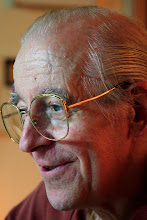At the tender age of 11, King Chongjo saw his father suffocate to death in a wooden box, the result of a conspiracy against him. The boy grew up with the image seared in his mind of his father dying as the result of hawkish political forces. He eventually succeeded his grandfather and upon taking the throne, King Chongjo bravely fought political opposition to reinstate his family’s honour by choosing Suwon (水原市, 수원시) in Kyonggi Province (京畿道, 경기도) as the site for his father’s grave. He established the court library, Kyujanggak (奎章閣, 규장각), by employing the talents of people beyond just the noble class. He formed his own security force to strengthen his authority. In 1794, he constructed Hwasong (華城, 화성, Brilliant Castle), in Suwon, building a new city surrounded by walls for the alleged purpose of guarding his father’s grave.

Hwasong (Brillant Castle)
Roh Moo-hyun’s administration was also unprecedented in its own ways. It escapes easy classification, as it was not entirely minority, radical or left-wing. The administration fired off attacks against conservative groups from the outset. “The pro-Japanese military forces have been living well for three generations. They must be sent to the museum,” he said, labelling them one of the country’s biggest domestic foes.
Throughout his 5-year term, Roh’s administration obsessively focused its reform efforts on conservatives. It took particular aim at Kangnam (江南區, 강남구), a southern Seoul district, which it alleged was the base of the rich and conservative element of society. As a result, the government bombarded the district with major real estate taxes. It also concluded that graduates of the elite Seoul National University (서울대학교) occupied the upper rungs of the social ladder. The government therefore frequently talked about closing the university. Conservative newspapers were also the target of reform and they were restrained under a new newspaper law. Additionally, the prosecution and the courts came under scrutiny following Roh’s heart-to-heart talks with young, reform-minded prosecutors. Large conglomerates were slapped with bribery charges and subject to audit inspections.
The Roh joked that he had ‘fun’ with his campaign promise to move the capital to the Chungchong Province (忠清道, 충청도). But he did not come up with the idea because it was fun. Rather, it was an ambitious move to wipe out the former conservative power by building a new foundation of authority in a new capital. The idea was barred by the Supreme Court (大法院, 대법원), which ruled that the capital relocation was ‘unconstitutional’. Roh revised the plan, detailing an effort to build a second administrative city called Sejong (世宗特別自治市, 세종 특별자치시).

Sejong City under construction (November 2009)
But let me go, for a moment, back to Chongjo. The king took no retaliatory action against the people and forces behind his father’s murder. When the leader of those forces, Sin Hwan-ji, fell ill, Chongjo sent a consolatory letter wishing him good health. He built a new power base among the young and reform-minded, yet continued to engage the old conservative powers. While building the country’s biggest new city near the capital, he sent his own security forces there with the sole mission of helping with defence, placing no political offices there. The visionary king’s desire with Hwasong was to create a self-sufficient, comfortable city. He used his own money to pay for the labour to build the city walls, water supply channels and farms to turn the region into a major agricultural producer. He offered merchants low taxes to attract them to the city.
He persuaded the country’s wealthiest merchants to lend capital to smaller traders to boost the trade industry. The city had been relatively small, consisting of 244 households with a population of 677. The number jumped to 15 000 households with a population of 55 000 after Chongjo refurbished the city. Known as Suwon again, it remains as one of the country’s largest satellite cities with a population of over one million. It may not have flourished as such if Chongjo had political and military designs in mind. In fact, the city might have vanished from history with his death.
Today’s political mainstream forces have fallen into a pit and are now in disarray. The majority ruling party is split by minority forces. They are wasting precious time talking about trust and betrayal as if they are two lovers. To solve the Sejong City problem, Koreans need look no further than the ancient city of Hwasong.
Photos by Chong Myo-hwa
Seoul, Korea
October 17, 2010

Nessun commento:
Posta un commento